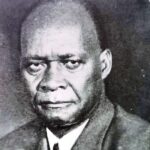OSEI KWADWO
- 4 Min Read
Osei Kwadwo (circa 1740/49?-1777), or Osei Kojo, an 18th-century Asante warrior king, who ruled from 1764-77, continued the aggressive and expansionist policy of Opoku Ware, [ruled 1720-50), which during his reign brought the Asante nation for the first time into conflict with the Fante on the coast.
He became the Asantehene (ruler of Asante) in 1764, after the deposition of the peacefully-inclined Kusi Obodum. He was youthful, and a great admirer of Opoku Ware. He came to the Golden Stool at a time when the rebellion of the Twifo to the south, the Wassa to the southwest, and the Akyem to the southeast had made it impossible for Asante traders to visit the coast to buy guns and other European goods. He therefore directed his efforts towards the crushing of these rebellions.
He found willing allies in the Fante, whose trade was also being ruined by the closing of the trade routes. The moment was opportune, for there was such dissension among the allies that when, in 1765, the Asante and Fante armies attacked, the Wassa and the Twifo withdrew, leaving the Akyem to their fate. In a series of battles, the Akyem were defeated, and their leader Pobi, the Okyehene (chief of Akyem), and all his important chiefs committed suicide.
But soon after this victory the Asante-Fante alliance began to disintegrate. The Fante feared that the Asante, who had established their camp near the town of Abora within the Fante federation, located about 10 mi (16 km) north of Saltpond, contemplated their destruction. The disputes which followed resulted in a war between the former allies. Since the Asante were operating in a predominantly hostile country, they were defeated. Osei Kwadwo struck camp and went home, threatening to return the following year to wage a better-planned campaign.
Meanwhile, Akyem Abuakwa to the southeast, under its new king Obirikoran, and in alliance with its Krobo and Akuapem neighbours, again revolted. Since the Asante feared that, given time, the rebels might seek help from the Fante, Osei Kwadwo quickly invaded Akyem Abuakwa and Krobo. The Akyem were defeated, and Obirikoran deposed. In his place the Asante installed Twum Ampforo on the Abuakwa stool, and then marched against the Krobo. But the Krobo, who lived on a mountain, named Krobo Hill, could not easily be subdued. The Asante were defeated, and retreated in disorder.
In the early 1770s, Osei Kwadwo next moved north to complete the subjection of the Dagomba, which Opoku Ware had begun in 1744-45. One result was that slaves became plentiful, and large numbers were brought down to the coast for sale to the Europeans.
In the administration of Asante, Osei Kwadwo successfully continued the policy initiated by his predecessors in reducing the powers of the Kumase chiefs. His method was to disgrace and banish the hereditary chiefs and to surround himself instead with chiefs loyal to his person. The new stools he created, such as those of Atipin and Anomako, were given to the descendants of past Asante kings. These chiefs, as sons of the Golden Stool, formed the king’s bodyguard and had a vested interest in ensuring that the powers of the monarchy were strengthened.
In the provinces, Osei Kwadwo realised that the traditional method whereby defeated chiefs were allowed to rule their peoples provided they affirmed their allegiance to the Asantehene by paying tributes and sending fighting men when and as required, was unsatisfactory. He therefore initiated the practice of appointing high-ranking Asante nobles to serve as the equivalent of regional and district commissioners for the Asante empire. One such representative was introduced to the Danes at Christiansborg Castle in 1776. Other representatives were placed in other coastal towns to ensure that the European traders paid the ground rents for their forts and castles regularly. These administrative changes enabled the Asantehene to exert control more effectively.
But while Asante’s influence increased on the coast during Osei Kwadwo’s reign, it did not become predominant. When he died in 1777 the Fante remained undefeated and were to remain so until a later Asantehene, Osei Bonsu finally defeated them in 1807.
J. K. FYNN



